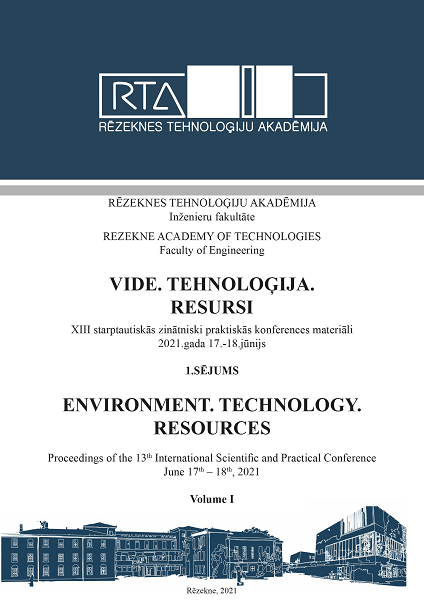SOURCES OF UNCERTAINTY AND PROBLEMS OF INCREASING THE ACCURACY OF FLOW ASSESMENT FOR THE TRANSBOUNDARY NARVA RIVER
DOI:
https://doi.org/10.17770/etr2021vol1.6612Keywords:
water discharge, flow assessment methods, transboundary river, hydroelectric power station (HEPS)Abstract
The water regime of the transboundary Narva River has always been constantly addressed by the hydrometeorological community. For many years, at the interstate level (the Russian Federation and the Republic of Estonia), there has been a discussion about the accuracy of flow assessment and the correctness of the methods applicable for these purposes. In some years, the discrepancies between the estimates of the average annual water discharge obtained by the Estonian and Russian sides reach values of 20-27%. Sustainable, reliable water use requires updating approaches and achieving greater unambiguity in the flow assessment. In the presented article, various sources of uncertainty in the Narva river flow assessment as hydrodynamic, seasonal factors and imperfection of existing methods are considered.
Downloads
References
The Narva river-basin project. The 1st Book "Environmental assessment and key problems of the river basin of the Narva river"
Materials of the USSR State Water Cadastre. "Basic hydrological characteristics" Volume 2. River basins of the Baltic Sea, Ladoga and Onega lakes for 1963-1970 years.
Official web-site of the Estonian Environment Agency [Web-site. Online]. Available: https://www.keskkonnaagentuur.ee/en/hydrology [Accessed March 4, 2021].
The Narva HEPS (Heps-13) operational water flow assessment instruction
Materials of the Water Cadastre of the Russian Federation. "Rivers and lakes of the Russian Federation (resources, regime and water quality)" for the 2003-2020 years.
Russian national technical Code SP 33-101-2003 "Determination of design hydrological performance"
HELCOM Baltic Marine Environment Protection Commission Report, "Nutrient loads to the Baltic Sea from Leningrad Oblast and transboundary rivers". [Web-resource. Online] Available: https://helcom.fi/media/publications/Nutrient-monitoring-in-Leningrad-Oblast_BASE-Project-Final-Report.pdf [Accessed February 26, 2021].
ER25 Narva WatMan project "Water Management of the Narva River: harmonization and sustention" official web-site. [Web-site. Online]. Available: https://www.narvawatman.com/t-ru-ru [Accessed March 5, 2021].
Yaroslav Kobets, "Comparison and analysis of water discharge estimation methods for the Narva river", Master thesis, Tallinn University of Technology, Rep. of Estonia, 2020.
Manual On Stream Gauging, vol. II, Geneva: World Meteorological Organization, 2010, pp. II.1-1-II.3-20.
Russian technical directive document. RD 153-34.2-21.563-00. "Requirements for Metering Wastewater at Hydroelectric Generating Stations"
The State Hydrological Institute-based report on the work to clarify the characteristics of water flow and calibration of culverts of the Narva HPP on topic II.14.3 (1989).
Jongkook Lee, Hongjoon Shin, Jeonghwan Ahn and Changsam Jeong, "Accuracy Improvement of Discharge Measurement with Modification of Distance Made Good Heading", Advances in Meteorology, Vol. s/n, p.1-9, 2016.
Official web-site of the Estonia-Russia Cross Border Cooperation Programme. [Web-site. Online]. Available: https://www.estoniarussia.eu/ [Accessed December 12, 2020].


